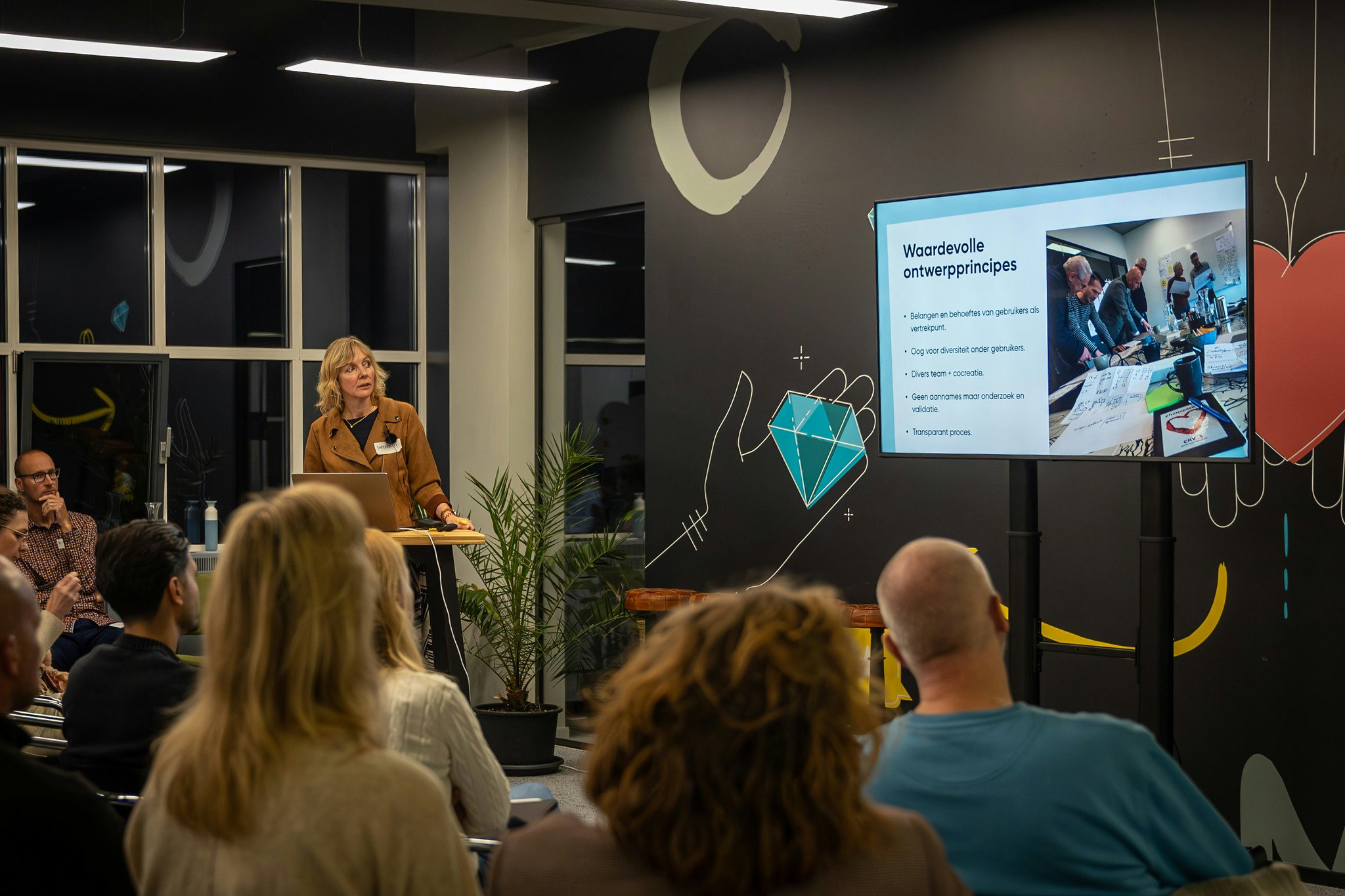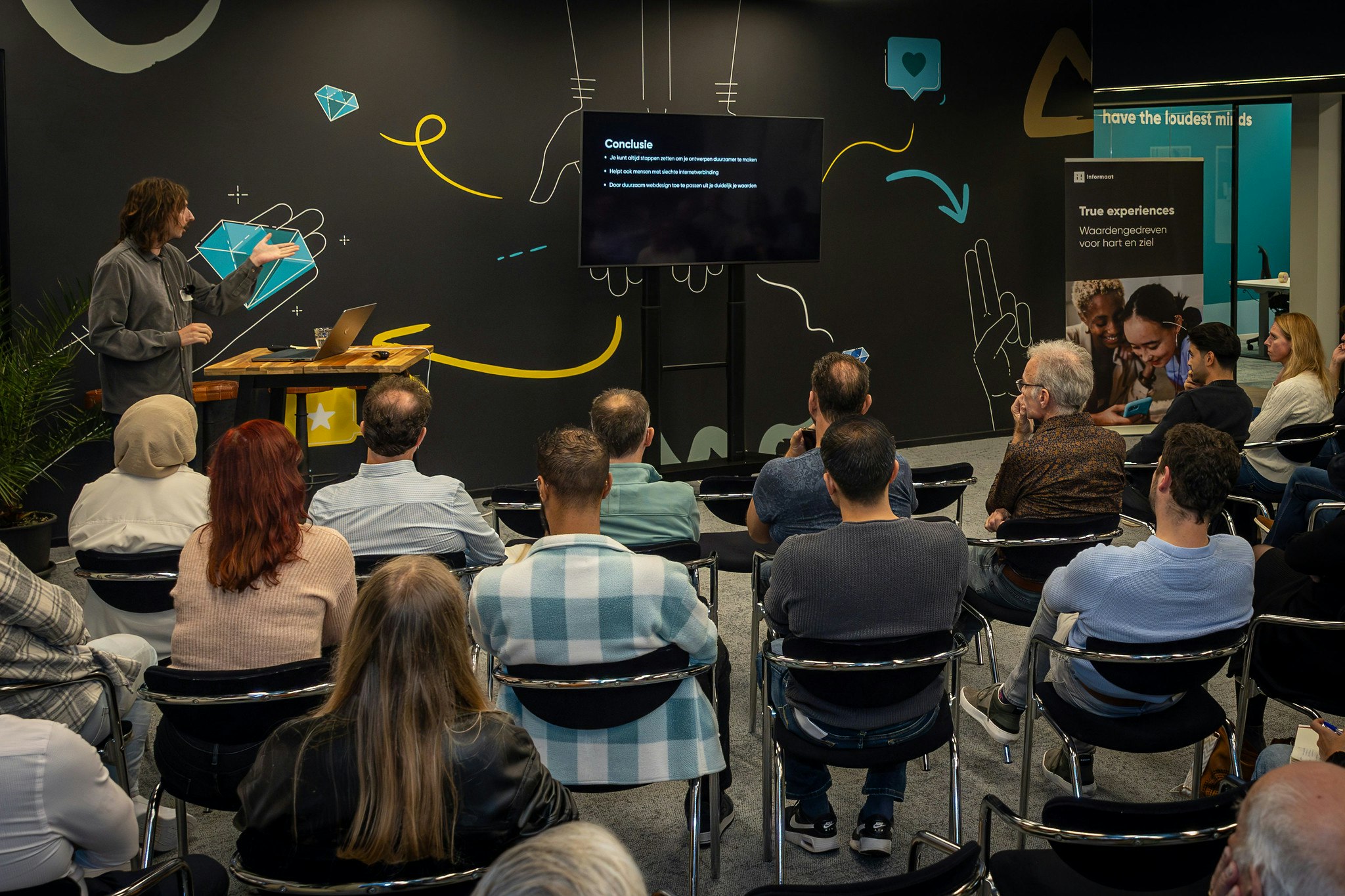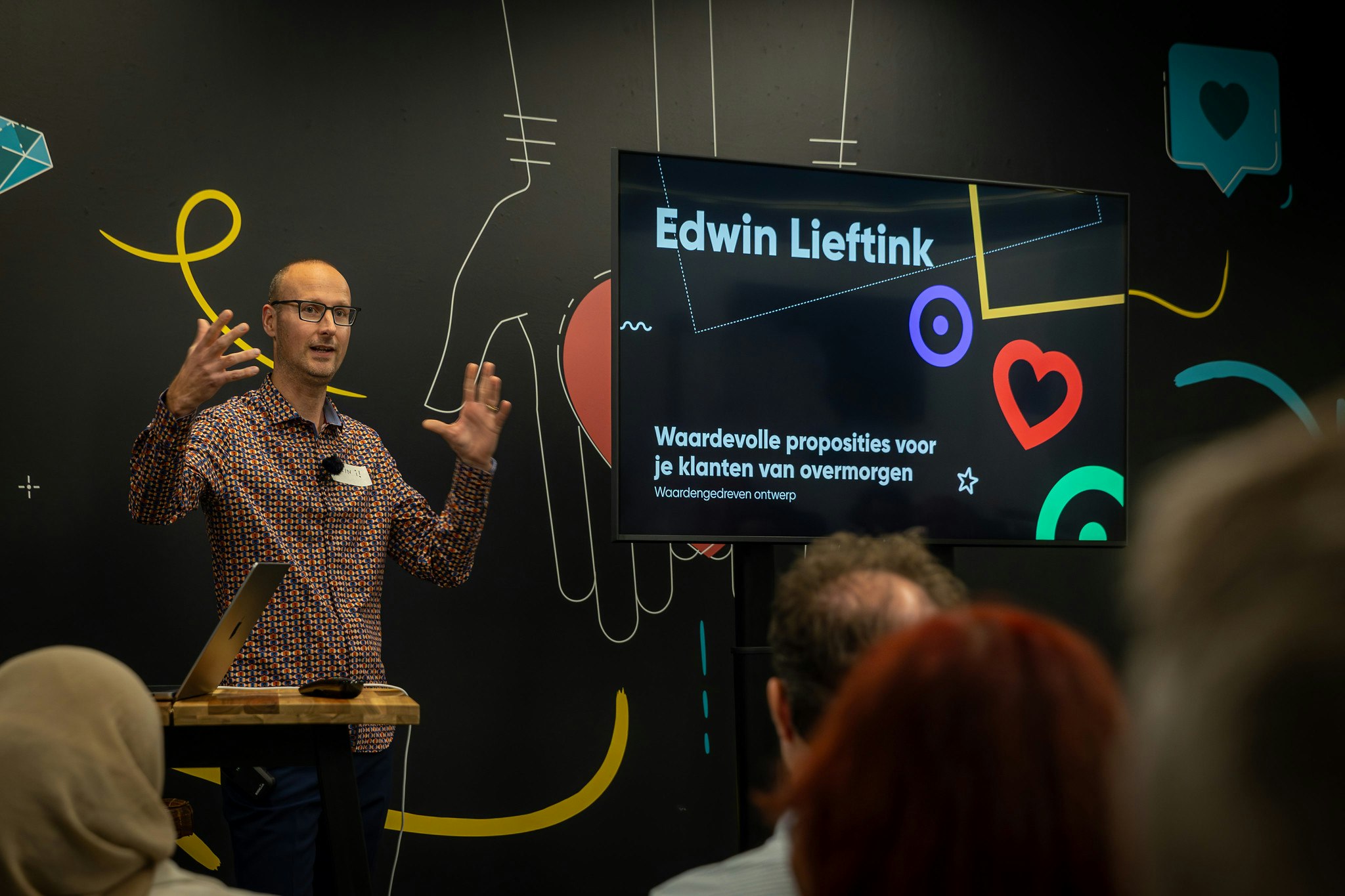Values-driven design in practice
Author
Mark Westbeek
Published
30 October 2023
Reading time
5 minutes
Values-driven design is an important topic for business and government. This was demonstrated once again during the event on values-driven design that Informaat organized on October 19 (World Values Day). Organizations are looking for ways to bind their target group strongly. Three practical examples.
The fact that many organizations are engaged in values-driven design was evident from the turnout alone – 35 participants in various roles such as innovation managers, product owners, ux leads, and strategists from the business world and government. And also from the conversations and discussions. Organizations are becoming increasingly aware that they build a more sustainable relationship with their customers or users if they succeed in basing their services in every detail on the deeper values of people and organizations.
Values and authenticity
Designing digital services based on values is attracting a lot of attention, notes Susanne van Mulken, strategy director of Informaat. "From the business community comes the question: how can we apply our values in everything we do? How can you use the latest technology responsibly?"
More and more people believe that companies have a role to play in solving social issues. Susanne: "Consumers explicitly look at what a company stands for. What impact that company makes on society or the environment." Research shows that 64% of people cite 'shared values' as the reason for choosing an organization or brand.
Organizations that express their values in an authentic and credible way reap the benefits. It delivers higher customer satisfaction, it leads to more turnover and their employees are more loyal. The importance of values is also increasing for governments. For example, to restore citizens' trust in the government.
Value pyramid

Informaat uses TrueX design as a method to identify values of the organization and of the user in all phases of the design process – understanding, design and validation – and to make them as a benchmark for decisions. An aid to this is the value pyramid. This is a pyramid with common values that people can attach to products and services. These can be functional/economic values (e.g. Simplicity), emotional values (e.g. Pleasure), identity values (e.g. Belonging) or meaningful values (e.g. Justice). The more you as an organization are able to address values higher up in this pyramid, the better you can forge a deeper connection with your target group.
Values in practice
Three designers from Informaat talked about values-driven design during the event. Concrete and often recognizable for the attendees.
Public values

Information specialist Barbara Werdmuller talked about public values as a compass for government. "Technology is not neutral, it is developed by humans and it is human to have a limited perspective," Barbara said. "Government is about values like equal treatment, non-discrimination, safety. It is important to apply these principles, which take the interests and needs of users as a starting point." Working transparently is also such a principle. "Providing insight into how you arrive at certain design decisions."
Sustainability and design

UX designer Roel Jansen held up a mirror to the attendees about applying sustainability in the design work. "Applying sustainable web design is an expression of your values. One of the largest emitters of CO2 is the energy sector. Internet use emits more CO2 than aviation. An hour of video streaming uses as much energy as the refrigerator uses in a week." What can you do about that as a designer? Roel: "Keeping the website small. Offer your users sustainable choices. Consciously dealing with multimedia content, not keeping unnecessary pages in the air, using as few custom fonts as possible. Also consider the use of colour: the colour blue costs 25% more energy. Applying dark mode is more energy efficient."
After all the inspiration for more sustainable solutions for your project, Roel also gave a number of tips for individual application: for example, use less generative AI, unsubscribe from unread newsletters. Quite confronting.
The values of livestock farmers

Service designer Edwin Lieftink talked about his designs for the livestock cooperative CRV, with the values of the affiliated farmers as a starting point. "Designing is people-oriented, we all think so. To find out what drives the farmers, we went into the barn with them. To observe their daily activities and map out their values." The values that livestock farmers find important are: contributing something, freedom, belonging, recognition, efficiency. This gave rise to the idea for an independent improvement platform, for farmers by farmers. "A platform full of improvement plans, with many options to choose from. Because farmers find freedom super important, so give them the freedom to make their own choices digitally."
Recognition
Among the visitors of the event there was a lot of recognition and of course also discussion. Two interesting comments during the closing discussion: 'You get to the heart of business operations. Partly for that reason, it is important to find the right people in the organization and involve them at an early stage' and 'The young generation of customers quickly pierces through if you use values purely as window dressing. It is therefore important that you let the values resonate in a consistent and credible way.'
Learn more
Do you want to go through the presentations? You can download them as a PDF.
If you want to get started right away, get inspired by our TrueX toolkit, which we shared with the event attendees: a playbook, a value card set, the value pyramid and other canvases you need to get started with values-driven design.
About the author





